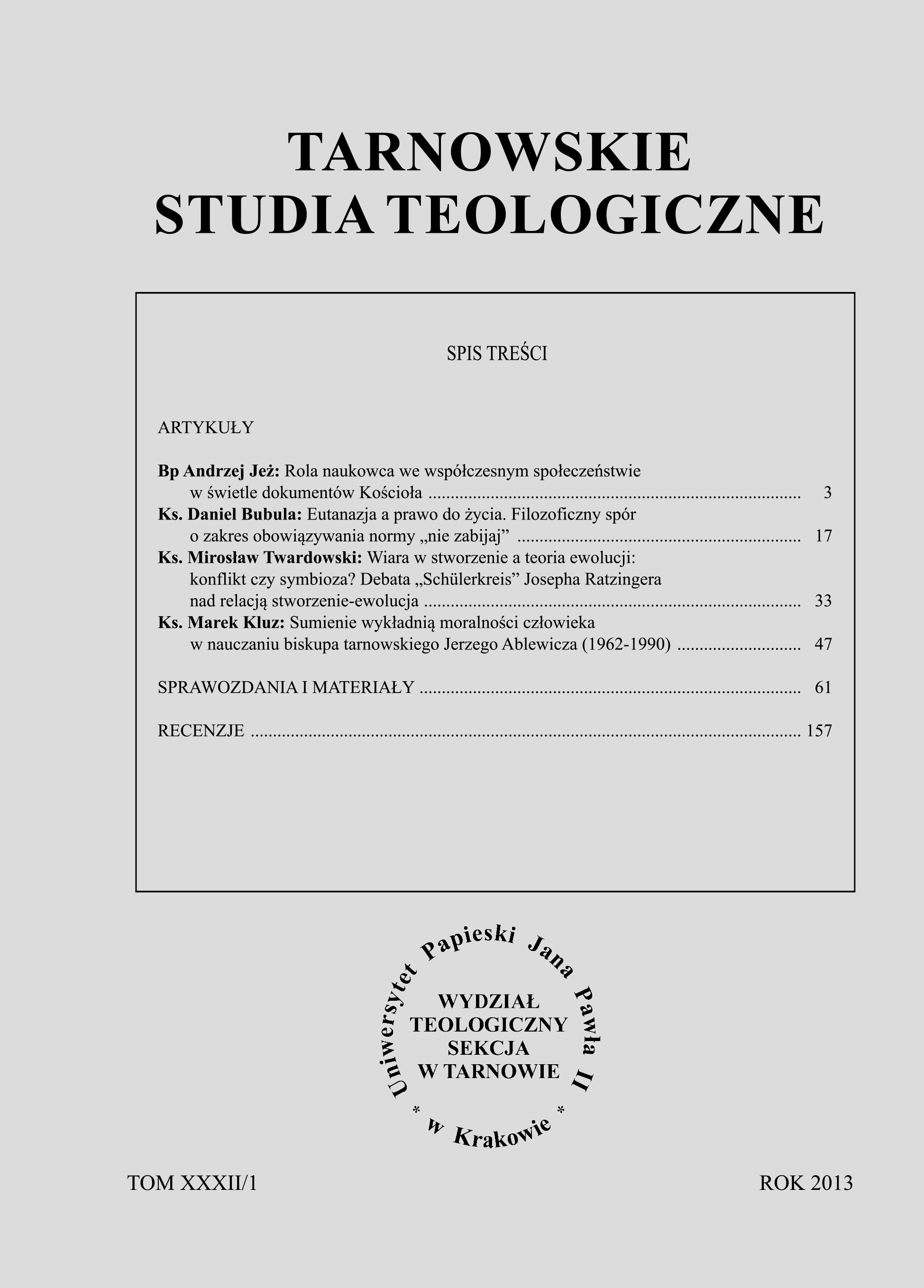Euthanasia and the Right to Life. A philosophical dispute on the scope of validity of the norm "You shall not kill"
DOI:
https://doi.org/10.15633/tts.301Keywords:
euthanasia, right to die, passive euthanasia, active euthanasiaAbstract
This article bears a polemical character. Apart from the arguments for euthanasia, the reader will have an opportunity to get acquainted also with the arguments against considering euthanasia as morally justified. The ethical debate on the problem euthanasia should exhibit characteristics of a controversy over arguments. However, rejection of euthanasia does not mean undertaking all the possible efforts that aim at prolonging human life. There are situations in which a doctor must take a dramatic decision not to start a therapy or decision to abandon it, limiting his intervention to alleviating the patient’s pain.Downloads
Published
2013-09-09
Issue
Section
Artykuły
License
Copyright (c) 2013 Daniel Bubula

This work is licensed under a Creative Commons Attribution 4.0 International License.
Authors who publish with this journal agree to the following terms:
- Authors retain the copyright and full publishing rights without restrictions, and grant the journal right of first publication with the work simultaneously licensed under a Creative Commons Attribution 4.0 International License that allows others to share the work with an acknowledgement of the work's authorship and initial publication in this journal.
- Authors are able to enter into separate, additional contractual arrangements for the non-exclusive distribution of the journal's published version of the work (e.g., post it to an institutional repository or publish it in a book), with an acknowledgement of its initial publication in this journal.
- Authors are permitted and encouraged to post their work online (e.g., in institutional repositories or on their website) prior to and during the submission process, as it can lead to productive exchanges, as well as earlier and greater citation of published work (See The Effect of Open Access).

